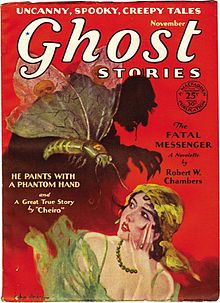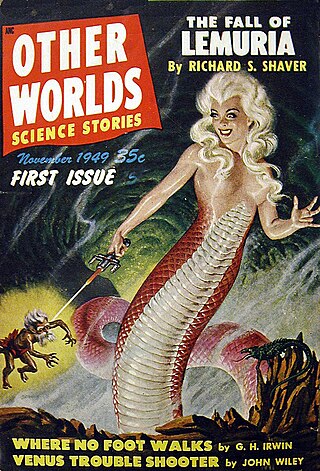
Other Worlds, Universe Science Fiction, and Science Stories were three related US magazines edited by Raymond A. Palmer. Other Worlds was launched in November 1949 by Palmer's Clark Publications and lasted for four years in its first run, with well-received stories such as "Enchanted Village" by A. E. van Vogt and "Way in the Middle of the Air", one of Ray Bradbury's "Martian Chronicle" stories. Since Palmer was both publisher and editor, he was free to follow his own editorial policy, and presented a wide array of science fiction.

Tales of Wonder was a British science fiction magazine published from 1937 to 1942, with Walter Gillings as editor. It was published by The World's Work, a subsidiary of William Heinemann, as part of a series of genre titles that included Tales of Mystery and Detection and Tales of the Uncanny. Gillings was able to attract some good material, despite the low payment rates he was able to offer; he also included many reprints from U.S. science fiction magazines. The magazine was apparently more successful than the other genre titles issued by The World's Work, since Tales of Wonder was the only one to publish more than a single issue.
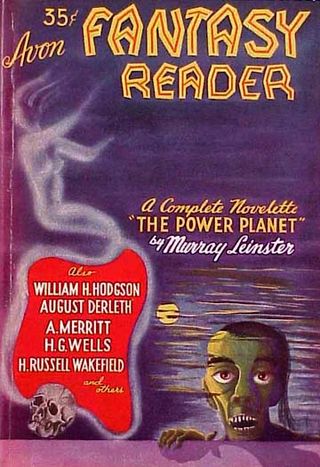
Avon published three related magazines in the late 1940s and early 1950s, titled Avon Fantasy Reader, Avon Science Fiction Reader, and Avon Science Fiction and Fantasy Reader. These were digest size magazines which reprinted science fiction and fantasy literature by now well-known authors. They were edited by Donald A. Wollheim and published by Avon.
Science Fiction Adventures was a British digest-size science fiction magazine, published from 1958 to 1963 by Nova Publications as a companion to New Worlds and Science Fantasy. It was edited by John Carnell. Science Fiction Adventures began as a reprint of the American magazine of the same name, Science Fiction Adventures, but after only three issues the American version ceased publication. Instead of closing down the British version, which had growing circulation, Nova decided to continue publishing it with new material. The fifth issue was the last which contained stories reprinted from the American magazine, though Carnell did occasionally reprint stories thereafter from other sources.

A. Merritt's Fantasy Magazine was an American pulp magazine which published five issues from December 1949 to October 1950. It took its name from fantasy writer A. Merritt, who had died in 1943, and it aimed to capitalize on Merritt's popularity. It was published by Popular Publications, alternating months with Fantastic Novels, another title of theirs. It may have been edited by Mary Gnaedinger, who also edited Fantastic Novels and Famous Fantastic Mysteries. It was a companion to Famous Fantastic Mysteries, and like that magazine mostly reprinted science-fiction and fantasy classics from earlier decades.

Dynamic Science Stories was an American pulp magazine which published two issues, dated February and April 1939. A companion to Marvel Science Stories, it was edited by Robert O. Erisman and published by Western Fiction Publishing. Among the better known authors who appeared in its pages were L. Sprague de Camp and Manly Wade Wellman.
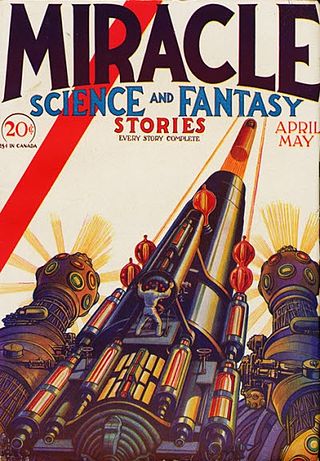
Miracle Science and Fantasy Stories was an American pulp science fiction magazine which published two issues in 1931. The fiction was unremarkable, but the cover art and illustrations, by Elliott Dold, were high quality, and have made the magazine a collector's item. The magazine ceased publication when Dold became ill and was unable to continue his duties both as editor and artist.

Strange Stories was a pulp magazine which ran for thirteen issues from 1939 to 1941. It was edited by Mort Weisinger, who was not credited. Contributors included Robert Bloch, Eric Frank Russell, C. L. Moore, August Derleth, and Henry Kuttner. Strange Stories was a competitor to the established leader in weird fiction, Weird Tales. With the launch, also in 1939, of the well-received Unknown, Strange Stories was unable to compete. It ceased publication in 1941 when Weisinger left to edit Superman comic books.
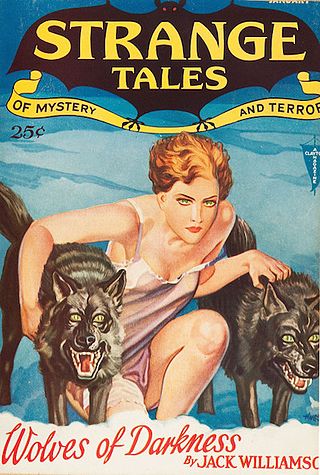
Strange Tales was an American pulp magazine first published from 1931 to 1933 by Clayton Publications. It specialized in fantasy and weird fiction, and was a significant competitor to Weird Tales, the leading magazine in the field. Its published stories include "Wolves of Darkness" by Jack Williamson, as well as work by Robert E. Howard and Clark Ashton Smith. The magazine ceased publication when Clayton entered bankruptcy. It was temporarily revived by Wildside Press, which published three issues edited by Robert M. Price from 2003 to 2007.
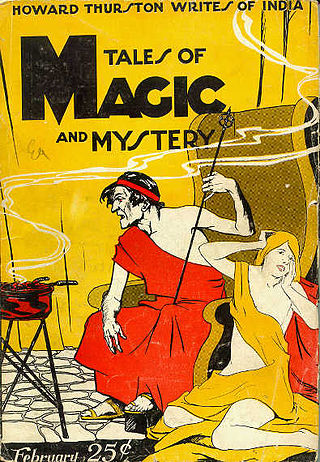
Tales of Magic and Mystery was a pulp magazine which published five monthly issues from December 1927 to April 1928. It was edited by Walter Gibson, and published a mixture of fiction and articles on magic. It is now mainly remembered for having published a story by H.P. Lovecraft.
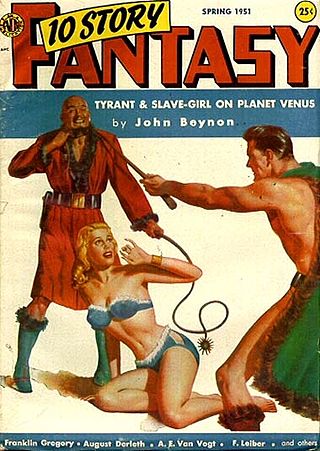
10 Story Fantasy was a science fiction and fantasy pulp magazine which was launched in 1951. The market for pulp magazines was already declining by that time, and the magazine only lasted a single issue. The stories were of generally good quality, and included work by many well-known writers, such as John Wyndham, A.E. van Vogt and Fritz Leiber. The most famous story it published was Arthur C. Clarke's "Sentinel from Eternity", which later became part of the basis of the movie 2001: A Space Odyssey.

Tops in Science Fiction was an American pulp science fiction magazine launched in 1953. The publisher, Love Romances Publishing, created it as a vehicle to reprint stories from Planet Stories. It was unsuccessful and only lasted for two issues. Although it contained no original stories, it did print some original artwork, including some of Kelly Freas's early work. A British reprint edition appeared in the mid-1950s.
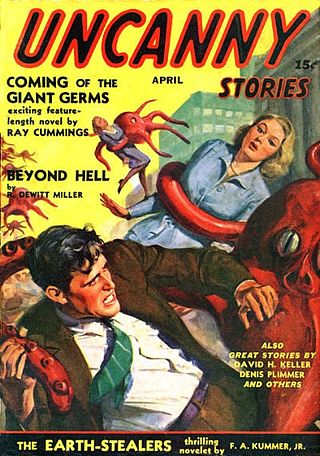
Uncanny Stories was a pulp magazine which published a single issue, dated April 1941. It was published by Abraham and Martin Goodman, who were better known for "weird-menace" pulp magazines that included much more sex in the fiction than was usual in science fiction of that era. The Goodmans published Marvel Science Stories from 1938 to 1941, and Uncanny Stories appeared just as Marvel Science Stories ceased publication, perhaps in order to use up the material in inventory acquired by Marvel Science Stories. The fiction was poor quality; the lead story, Ray Cummings' "Coming of the Giant Germs", has been described as "one of his most appalling stories".

Captain Future was a science fiction pulp magazine launched in 1940 by Better Publications, and edited initially by Mort Weisinger. It featured the adventures of Captain Future, a super-scientist whose real name was Curt Newton, in every issue. All but two of the novels in the magazine were written by Edmond Hamilton; the other two were by Joseph Samachson. The magazine also published other stories that had nothing to do with the title character, including Fredric Brown's first science fiction sale, "Not Yet the End". Captain Future published unabashed space opera, and was, in the words of science fiction historian Mike Ashley, "perhaps the most juvenile" of the science fiction pulps to appear in the early years of World War II. Wartime paper shortages eventually led to the magazine's cancellation: the last issue was dated Spring 1944.
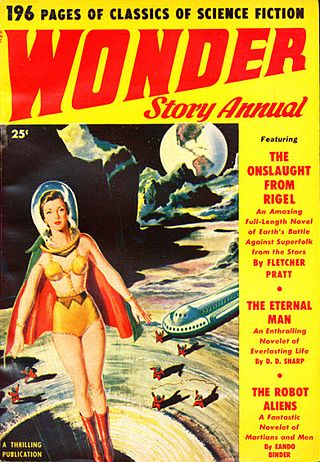
Wonder Story Annual was a science fiction pulp magazine which was launched in 1950 by Standard Magazines. It was created as a vehicle to reprint stories from early issues of Wonder Stories, Startling Stories, and Wonder Stories Quarterly, which were owned by the same publisher. It lasted for four issues, succumbing in 1953 to competition from the growing market for paperback science fiction. Reprinted stories included Twice in Time, by Manly Wade Wellman, and "The Brain-Stealers of Mars", by John W. Campbell.

Science-fiction and fantasy magazines began to be published in the United States in the 1920s. Stories with science-fiction themes had been appearing for decades in pulp magazines such as Argosy, but there were no magazines that specialized in a single genre until 1915, when Street & Smith, one of the major pulp publishers, brought out Detective Story Magazine. The first magazine to focus solely on fantasy and horror was Weird Tales, which was launched in 1923, and established itself as the leading weird fiction magazine over the next two decades; writers such as H.P. Lovecraft, Clark Ashton Smith and Robert E. Howard became regular contributors. In 1926 Weird Tales was joined by Amazing Stories, published by Hugo Gernsback; Amazing printed only science fiction, and no fantasy. Gernsback included a letter column in Amazing Stories, and this led to the creation of organized science-fiction fandom, as fans contacted each other using the addresses published with the letters. Gernsback wanted the fiction he printed to be scientifically accurate, and educational, as well as entertaining, but found it difficult to obtain stories that met his goals; he printed "The Moon Pool" by Abraham Merritt in 1927, despite it being completely unscientific. Gernsback lost control of Amazing Stories in 1929, but quickly started several new magazines. Wonder Stories, one of Gernsback's titles, was edited by David Lasser, who worked to improve the quality of the fiction he received. Another early competitor was Astounding Stories of Super-Science, which appeared in 1930, edited by Harry Bates, but Bates printed only the most basic adventure stories with minimal scientific content, and little of the material from his era is now remembered.

Fantasy was a British science fiction magazine, edited by Walter Gillings, which published three issues from 1946 to 1947. Gillings began collecting submissions for the magazine in 1943, but the publisher, Temple Bar, delayed launching it until the success of New Worlds, another British science fiction magazine, convinced them there was a viable market. Gillings obtained stories from Eric Frank Russell, John Russell Fearn, and Arthur C. Clarke, whose "Technical Error" was the first story of Clarke's to see print in the UK. Gillings published two more stories by Clarke, both under pseudonyms, but Temple Bar ceased publication of Fantasy after the third issue because of paper rationing caused by World War II. Gillings was able to use some of the stories he had acquired for Fantasy in 1950, when he became editor of Science Fantasy.

Beatrice Mahaffey (1928–1987) was an American science fiction fan and editor. She met Raymond Palmer in 1949 at the World Science Fiction Convention in Cleveland, and was hired to assist him at Clark Publications, his publishing company. She worked on Other Worlds from May 1950; Palmer was incapacitated by an accident for a while shortly after she was hired, though he remained involved from his hospital bed. She was listed as coeditor from November 1952 to July 1953 and from May 1955 to November 1955. She coedited both Science Stories and Universe Science Fiction with Palmer, along with the first four issues of Mystic Magazine, from November 1953 to May 1954. Science fiction historians Mike Ashley and E.F. Casebeer both consider that she had a strong positive influence on the magazines, and was probably responsible for acquiring much of the better material Palmer published. After Palmer closed his offices in Evanston, Illinois in 1955, Mahaffey continued to work on the magazine by mail from Cincinnati. In 1956, an unexpected tax bill forced Palmer to lay off Mahaffey, and he ran the magazine by himself from that point on.

Ace Mystery was a weird menace pulp magazine which published three issues starting in 1936, followed by two more under the title Detective Romances.
Between 1965 and 1976, Sol Cohen published over a hundred issues of science fiction magazines under a set of related titles.

